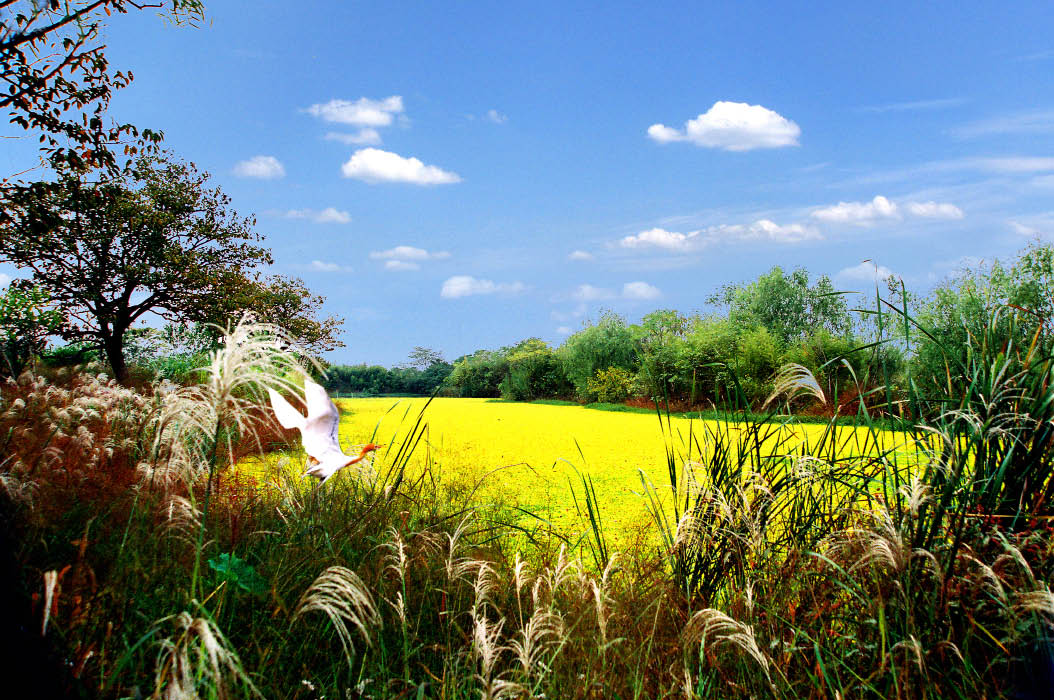| Wetlands Protection in China
By WANG SHUO
THE No.1 Document of 2011, also known as the first central document of the year, has changed its focus to water conservancy infrastructure construction; for the past seven years rural issues have been the unifying factor of previous documents.
But the director of Wetlands International’s China office Chen Kelin is worried about the change of focus. “Although there are disputes about the impact of water control projects on natural ecosystems, the indisputable fact is that the wetlands around the lower reaches of China’s rivers are shrinking due to imbalances in natural streamflows; such disturbances became common after large dams are built in the upper reaches,” says Chen.
 |
|
Wetlands, also known as the “kidneys of the Earth,” are considered one of the three great planetary ecosystems, together with forests and oceans. |
No Waiting on Wetlands Protection
Wetlands, reputed to be the “kidneys of the Earth,” are considered one of the earth’s three major ecosystems, together with forests and oceans. The functions of wetlands include improving water quality, adjusting the runoff, controlling floods, preventing drought and eliminating pollution. Wetlands also serve as ideal places for rare water birds to breed and spend the cold winters. They also play an important role in slowing down climate change.
There are many types of wetlands, such as coral reefs, mud flats, mangroves, swamps and even paddy fields. All these areas, being categorized as transitional zones between land and water bodies, are partially or completely covered by shallow pools of water.
China is rich in wetlands, harboring 10 percent of all in world, and ranks number one in terms of wetlands area in Asia, and fourth in the world. To date, China has established over 550 wetland nature reserves, 37 of which have been designated as sites of international significance.
However, under pressure from a growing population and rapid economic development, over time large areas of wetlands have been either degraded or lost due to human activity, particularly farming and urban expansion.
Jin Jianming, academician of the Chinese Academy of Engineering and consultant to the Ministry of Environmental Protection, released the following figures at the end of September, 2010: About 40 to 50 percent of the country’s wetlands have been degraded and most of those have lost their ecological functions. The Sanjiang Plain of Northeast China has lost over two thirds of its original wetlands, and Hebei Province has lost 90 percent of its wetlands over the past 50 years.
The danger facing wetlands in arid and semiarid regions is even more acute. Hundreds of lakes have dried-up and disappeared in Alxa League of Inner Mongolia because the upper reaches of the Heihe River have been overused, decreasing the amount of water that runs into the oasis from 900 million cubic meters to less than 200 million cubic meters. The same thing happened to the Tarim River Valley of Xinjiang. Because of over reclamation and cultivation of wastelands on the banks of its upper reaches, nearly a 350-kilometer section of the lower reaches dried up, and both the Lop Nur and the Tetima Lake turned to desert. The Zoige Grassland was once regarded the most beautiful wetland grassland in China. However, over 200 of its more than 300 lakes have shriveled and dried; about 105,300 hectares of its land has turned into sand and the desertification rate is sustained at about 11.65 percent annually.
Moreover, other human activities such as land reclamation directly converts lakes, seas and pools into farmland. In coastal areas, due to the shortage of space to develop, people are still enthusiastic about creating land from seabed. The local governments in Shanghai, Zhejiang and Xiamen have released a series of policies approving land reclamation from the sea. Yancheng City of Zhejiang Province originally boasted tidal wetlands stretching 582 kilometers along its seashore. Much was reclaimed, so that now merely 50 kilometers or less remain preserved for wild animals such as red-crowned cranes.
Yin Hong, deputy director of the State Forestry Administration (SFA), stated frankly at a national wetlands protection and management conference on November 17, 2010 that the process of accelerated urbanization and economic development still threatens China’s wetlands and land-development pressure will result in a certain degree of degradation for the foreseeable future.
Another official at the conference also admitted that urban development involves a diversity of interests and that puts wetlands protection in an unfavorable situation. In the past natural wetlands were often regarded as wasteland, and even now it is still listed as “unused land resources.” Largely because of these conceptions, there has been a sharp shrinkage of wetlands area via infilling for construction and conversion to crop production.
| 